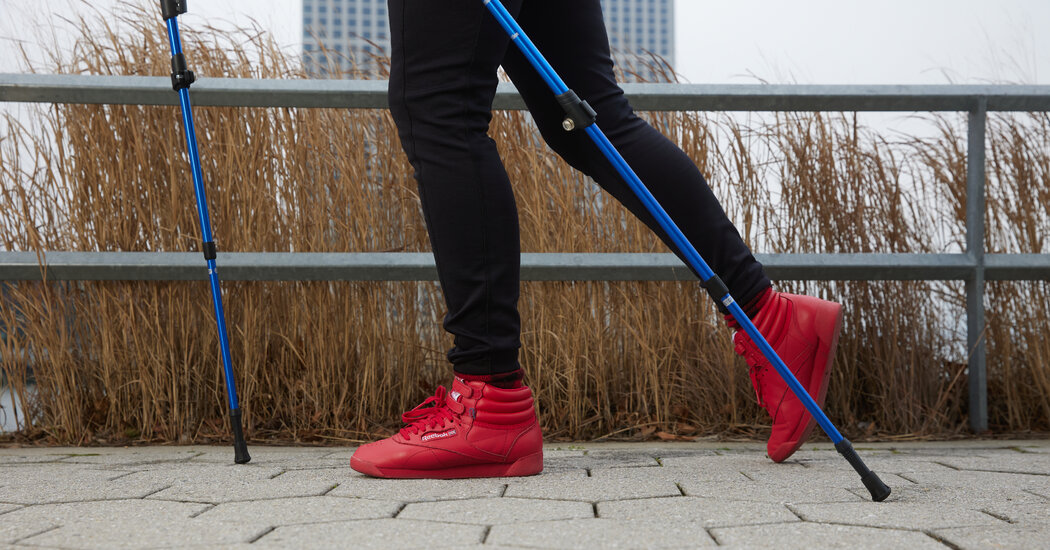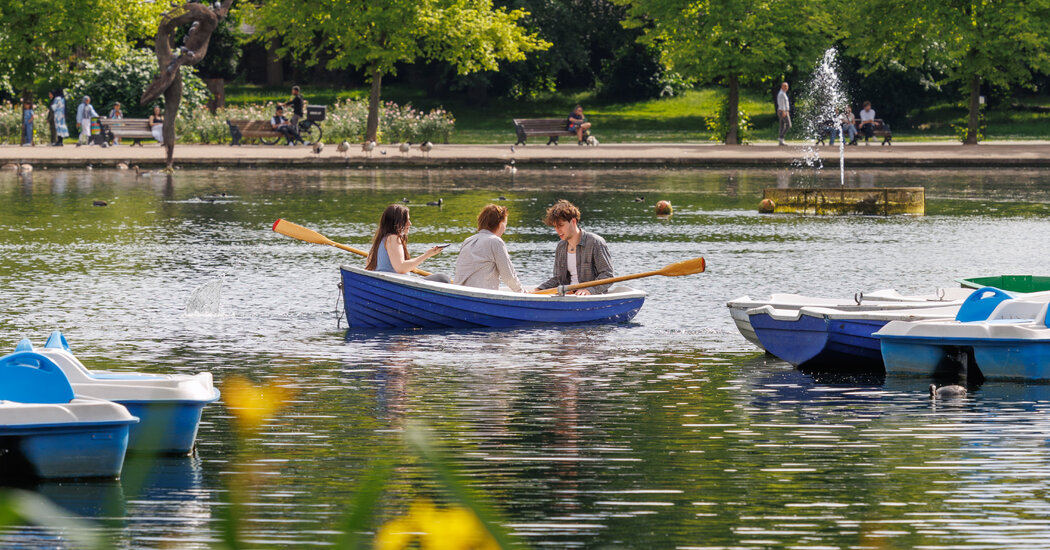If you’ve ever watched children at a playground or visited a skating rink, you’ve undoubtedly seen people of all ages taking tumbles. Falling is never fun, but the consequences become more serious as we get older.
More than 14 million adults age 65 and over report falling every year in the United States, and the risk increases with age. In fact, falls are the primary cause of injury-related death among older adults in the United States, and they can result in broken hips, spinal fractures and traumatic brain injuries.
But many falls can be prevented, said Dr. Gerald Pankratz, a geriatrician at the University of Wisconsin-Madison. That makes him “optimistic about this issue,” he said.
According to a recent policy statement from the American Public Health Association, evidence-based fall prevention strategies can reduce falls by 6 to 36 percent, depending on the intervention.
In his practice, Dr. Pankratz said, it is not unusual for people assessed as having a 50 percent chance of falling over the next year to cut their risk in half by taking action to avoid slips and trips.
Why falling increases with age
Normal changes in our bodies as we age make us more prone to falling and more likely to experience injuries from those falls, said Dr. David Reuben, a geriatrician at the University of California, Los Angeles.
We gradually begin losing strength in our 30s and 40s, and our balance begins declining around 50. But there’s “a kind of inflection” point around age 75, Dr. Reuben said, when people begin to experience more injuries when they fall.
As we age, peripheral nerves, which send messages from muscles to the brain, become less effective. This can reduce our body awareness, making it harder to recover quickly if we start to wobble.
Other health issues can increase older adults’ fall risk, too. Poor vision, hearing loss, gait problems and chronic illnesses such as dementia and depression can make it harder to navigate daily activities safely. And orthostatic hypotension, a sudden drop in blood pressure upon standing that causes dizziness, can increase the risk of falling, Dr. Pankratz said.
Alcohol and many commonly prescribed drugs, including benzodiazepines and certain antidepressants, can increase risk, too. But often, more than one factor increases the likelihood of falling, Dr. Reuben explained.
How to prevent falling
For older adults, falling once doubles the chance of falling again. Dr. Reuben recommends seeing your primary care doctor if you’ve fallen recently, particularly if you’re 75 or older. And regardless of your age, he advises seeing your doctor if you’re experiencing dizziness and unsteadiness, which are not normal symptoms but often have treatable causes.
After assessing your fall risk, your doctor might order vision and hearing tests, refer you to a physical therapist who can help correct orthopedic problems, suggest strategies to reduce dizziness upon standing, or send you to a pharmacist who can review your medications. But there are other actions that can help keep you on an even keel.
Wear the right shoes.
When Dr. Pankratz sees patients in his fall clinics, he assesses their footwear. If they’re having trouble clearing curbs, for instance, he might suggest shoes with lower soles.
He also stresses the importance of shoes with sufficient tread in winter to reduce the likelihood of slipping on snow or ice. And he advises against loose sandals and flip-flops, which can be “very bad because their whole sole flops down and drags on the floor.”
Fall-proof your home.
In 2023, Cochrane, a research organization, reviewed 22 studies that investigated fall-prevention strategies among older adults. It found that identifying and eliminating fall hazards at home — poorly lit corridors, stairs without railings and slippery pathways — was likely to reduce the overall rate of falls by 26 percent. The same interventions were even more effective in people who had a high risk of falling, reducing their overall rate by 38 percent.
Dr. Reuben often advises patients to add grab bars in the shower and to reduce clutter and other tripping hazards such as throw rugs and power cords.
Build strength and balance.
Exercises that build strength and balance have been found to reduce older adults’ fall risk by about a quarter, according to a 2019 review of multiple clinical trials. Fall-prevention exercise programs designed for older adults, including SAIL and Stepping On, typically include both.
Since weak quadriceps often contribute to falls and possible hip fractures, according to Dr. Reuben, sit-to-stand exercises that target these muscles are a key part of effective exercise programs. They also help maintain the full range of movement in hip and knee joints, which can reduce falls by keeping a person’s gait smooth and steady, said Julie Jones, a physiotherapist and associate dean at Robert Gordon University in Aberdeen, Scotland, who advised checking with a doctor before starting any new exercise routine.
Siobhan McMahon, director of the Center for Aging Science and Care Innovation at the University of Minnesota, recommends doing strength exercises at least twice a week and balance exercises at least three times a week.
To find a local fall-prevention exercise program, Dr. McMahon suggested, contact your area agency on aging, a senior center or a recreation center. She also recommended free live virtual exercise classes by AARP, as well as exercise videos and tutorials from the National Institute of Aging.
Physical therapists can also develop fall-prevention regimens that are suitable for older adults, Dr. Reuben said.
Address underlying fears.
After people fall once, it’s understandable that they might worry about falling again. But excessive fear of falling can be a risk factor in itself. One 2010 study found, for example, that older adults who were more fearful of falling than their health warranted experienced more falls or more injurious falls than those who had the same relatively low risk but a more accurate view of it.
Will Young, a psychologist and associate professor in the Department of Public Health and Sports Sciences at the University of Exeter, found in his research that people who are afraid of falling often walk slowly and stiffly. But adopting this “general stiffening strategy” can backfire, he said. “If you start to lose your balance or you get bumped,” rigidity can make it “harder to do that quick recovery step” to avoid falling, he said.
Cognitive behavioral therapy has been shown to reduce fear of falling in older adults and improve their balance. Yoga and tai chi can also reduce undue fear and rigidity, Dr. Young said.
Practicing tai chi, which is filled with “turning moments,” is also a great way to practice turning safely, said Sarah Lamb, a physiotherapist at the University of Exeter who has found in some of her research that people often stand up and turn shortly before a fall.
Get a pair of walking poles.
Dr. Jones often sees adults in their 60s and 70s who walk pitched forward with shuffling feet, teetering as they go, she said. But Nordic walking poles encourage a slight rotation of the arms with each pole plant that improves walking stability, Dr. Jones said.
Above all else, it’s important to continue exercising — for the rest of your life — to maintain your strength and balance. Travel, injury and illness can disrupt exercise. “But when you experience a setback, it’s essential to start again,” Dr. Lamb said. “It’s perfectly fine to drop the level down and build yourself back up. But don’t let setbacks stop you.”










